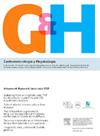在对溃疡性结肠炎患者进行结肠镜检查时利用人工智能检测发育不良:一项横断面、非劣效诊断测试比较研究。
IF 1.9
4区 医学
Q3 GASTROENTEROLOGY & HEPATOLOGY
引用次数: 0
摘要
背景和研究目的:建议对有结肠直肠癌风险的溃疡性结肠炎患者进行高清虚拟色内镜检查和有针对性的活检,以监测发育不良情况。计算机辅助检测(CADe)系统旨在改善结肠腺瘤的检测,但其在这种情况下检测息肉和腺瘤的效果仍不明确。本研究评估了 CADe DiscoveryTM 系统检测溃疡性结肠炎结肠癌高危患者结肠发育不良的效果:对 2021 年 1 月至 2021 年 4 月期间接受结直肠癌监测结肠镜检查的溃疡性结肠炎患者进行了一项前瞻性横断面非劣效性诊断测试比较研究。患者接受了带有光学增强功能的 iSCAN 1 和 3 虚拟色谱内镜(VCE)检查。一名内镜医师对 CADe DiscoveryTM 系统的结果保密,负责检查结肠切片,另一名内镜医师同时查看 CADe 图像。两种技术检测出的可疑区域都进行了切除。计算了通过 VCE 或 CADe 检测到的发育不良病变和患者的比例:结果:共纳入 52 名患者,分析了 48 个病灶。VCE和CADe各检测出9例发育不良病例(分别为21.4%和20.0%;P=0.629),分别为8例患者和7例患者(分别为15.4%和13.5%;P=0.713)。使用 VCE 或 CADe 检测发育不良的敏感性、特异性、阳性和阴性预测值以及诊断准确性分别为 90% 和 90%、13% 和 5%、21% 和 2%、83% 和 67% 以及 29.2% 和 22.9%:CADe DiscoveryTM 系统在检测有患结肠直肠癌风险的溃疡性结肠炎患者结肠发育不良方面的诊断性能与 VCE 和 iSCAN 相似。本文章由计算机程序翻译,如有差异,请以英文原文为准。
Artificial intelligence for dysplasia detection during surveillance colonoscopy in patients with ulcerative colitis: A cross-sectional, non-inferiority, diagnostic test comparison study
Background and study aim
High-definition virtual chromoendoscopy, along with targeted biopsies, is recommended for dysplasia surveillance in ulcerative colitis patients at risk for colorectal cancer. Computer-aided detection (CADe) systems aim to improve colonic adenoma detection, however their efficacy in detecting polyps and adenomas in this context remains unclear. This study evaluates the CADe Discovery™ system's effectiveness in detecting colonic dysplasia in ulcerative colitis patients at risk for colorectal cancer.
Patients and methods
A prospective cross-sectional, non-inferiority, diagnostic test comparison study was conducted on ulcerative colitis patients undergoing colorectal cancer surveillance colonoscopy between January 2021 and April 2021. Patients underwent virtual chromoendoscopy (VCE) with iSCAN 1 and 3 with optical enhancement. One endoscopist, blinded to CADe Discovery™ system results, examined colon sections, while a second endoscopist concurrently reviewed CADe images. Suspicious areas detected by both techniques underwent resection. Proportions of dysplastic lesions and patients with dysplasia detected by VCE or CADe were calculated.
Results
Fifty-two patients were included, and 48 lesions analyzed. VCE and CADe each detected 9 cases of dysplasia (21.4% and 20.0%, respectively; p = 0.629) in 8 patients and 7 patients (15.4% vs. 13.5%, respectively; p = 0.713). Sensitivity, specificity, positive and negative predictive values, and diagnostic accuracy for dysplasia detection using VCE or CADe were 90% and 90%, 13% and 5%, 21% and 2%, 83% and 67%, and 29.2% and 22.9%, respectively.
Conclusions
The CADe Discovery™ system shows similar diagnostic performance to VCE with iSCAN in detecting colonic dysplasia in ulcerative colitis patients at risk for colorectal cancer.
求助全文
通过发布文献求助,成功后即可免费获取论文全文。
去求助
来源期刊

Gastroenterologia y hepatologia
GASTROENTEROLOGY & HEPATOLOGY-
CiteScore
1.50
自引率
10.50%
发文量
147
审稿时长
48 days
期刊介绍:
Gastroenterology and Hepatology is the first journal to cover the latest advances in pathology of the gastrointestinal tract, liver, pancreas, and bile ducts, making it an indispensable tool for gastroenterologists, hepatologists, internists and general practitioners.
 求助内容:
求助内容: 应助结果提醒方式:
应助结果提醒方式:


